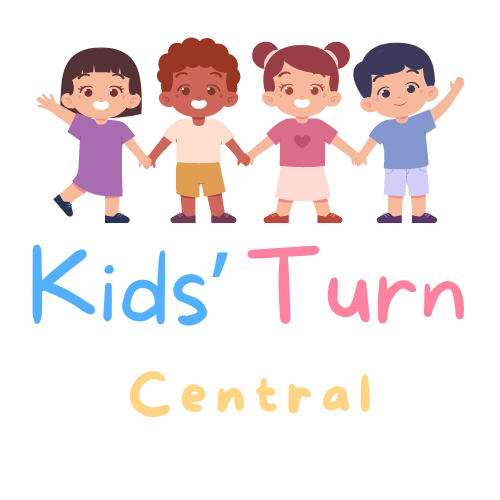As a parent, you may have noticed that your child has an aversion to blankets. It can be frustrating to tuck your little one in at night only to find them kicking the covers off. But why do some children hate blankets?

One reason could be the feeling of being confined or restricted. Toddlers, especially, are on a quest for independence and may see blankets as a form of confinement. According to Simple Busy Mom Tips, your toddler may resist being covered by a blanket simply because they want to be free.
Another reason could be discomfort with the texture or fabric of the blanket. Children have sensitive skin, and certain materials may cause irritation or discomfort, leading them to reject the covers. Additionally, feeling overheated can cause children to reject blankets. According to Sleep Baby, if your toddler is feeling too warm, they may resist being covered up.
Understanding Blanket Rejection

As a parent, it can be frustrating when your child hates blankets. However, there are several reasons why your child may be rejecting blankets. In this section, I will explore some of the most common reasons.
Sensory Processing Issues
Some children have sensory processing issues that make them more sensitive to certain textures, fabrics, and temperatures. For example, a child may find the texture of a blanket uncomfortable or the weight of a blanket overwhelming. If your child has sensory processing issues, they may prefer a lighter or softer blanket or no blanket at all.
Temperature Sensitivity
Another reason why your child may be rejecting blankets is that they are too warm or too cold. Children have a smaller body mass and less body fat than adults, which means they can lose heat more quickly. If your child is too warm, they may feel uncomfortable and sweaty under a blanket. If they are too cold, they may shiver and struggle to sleep. It is important to keep your child’s room at a comfortable temperature and to choose a blanket that is appropriate for the season.
Preference for Movement
Finally, some children simply prefer to move around freely while they sleep. This is especially true for active toddlers and young children who may feel constrained by a blanket. If your child is rejecting blankets because they prefer to move around, consider using a sleep sack or wearable blanket that allows for more movement.
Child Development and Blanket Use

As a parent, I know that getting your child to sleep through the night is a top priority. However, sometimes our children resist the things that we think will help them sleep better, such as blankets. In this section, I will explore how a child’s developmental milestones and their desire for independence and control can affect their willingness to use a blanket.
Developmental Milestones
According to the American Academy of Pediatrics, children go through a series of developmental milestones that affect their behavior and preferences. For example, at around six months old, babies begin to understand object permanence, which means they realize that objects still exist even when they cannot see them. This newfound awareness may lead to a preference for a specific blanket or stuffed animal that provides comfort and familiarity.
As children continue to develop, they may become more aware of their surroundings and start to explore and experiment with their environment. This newfound sense of curiosity may lead to a reluctance to use a blanket, as it can feel restrictive and limit their ability to move and explore.
Independence and Control
As children grow, they begin to assert their independence and desire for control over their environment. They may resist the use of a blanket because it is seen as a parental imposition that limits their freedom and control.
In addition, children may have sensory issues that make them uncomfortable with certain textures or materials. For example, some children may find the texture of a blanket uncomfortable or itchy, leading them to resist its use.
Psychological Factors

As a parent, you may be wondering why your child hates blankets. There are several psychological factors that could be contributing to this behavior.
Attachment to Other Objects
One possible reason why your child may hate blankets is because they have developed an attachment to another object. According to a twin study, children who spend a lot of time in non-maternal childcare may develop attachments to inanimate objects as a coping mechanism for dealing with separation anxiety. This attachment can be so strong that they may reject anything else, including blankets.
Fear or Anxiety Triggers
Another possible reason why your child may hate blankets is because they associate them with fear or anxiety triggers. According to mommyandlove.com, some children may feel trapped or enclosed by blankets, which can trigger feelings of anxiety or claustrophobia. Additionally, children who have experienced traumatic events or have anxiety disorders may associate blankets with negative emotions, which can cause them to reject them.
Environmental Considerations

As a parent, it’s important to consider the sleep environment of your child. The temperature of the room, the type of mattress and bedding, and even the noise level can all impact how well your child sleeps. When it comes to blankets, there are a few environmental factors to consider.
Sleep Environment
One reason your child may hate blankets is that they’re too hot or too cold. According to SleepBaby.org, feeling overheated can cause your toddler to reject covers. On the other hand, if your child is feeling too cold, they may not want a light blanket that doesn’t provide enough warmth. Consider the temperature of your child’s room and adjust their bedding accordingly.
Cultural Norms
Another environmental factor to consider is cultural norms. In some cultures, it’s common for children to sleep with heavy blankets or even multiple layers of clothing. In other cultures, children may sleep with minimal bedding or even no covers at all. If your child is used to a certain type of sleep environment, they may resist changes to their bedding. It’s important to respect your child’s cultural background and preferences when it comes to sleep.
Practical Tips for Parents
As a parent, it can be frustrating when your child refuses to use a blanket. However, there are practical tips that can help you create a more comfortable environment for your child.
Choosing the Right Blanket
When choosing a blanket, consider the texture and weight of the material. A soft and lightweight blanket may be more appealing to your child than a heavy and scratchy one. Additionally, you may want to consider a blanket with a fun pattern or design that your child will enjoy.
Creating a Comforting Atmosphere
Creating a calm and relaxing atmosphere in your child’s bedroom can also help encourage the use of a blanket. Consider using a nightlight or playing soothing music to help your child feel more comfortable and secure. You may also want to consider adding a favorite stuffed animal or toy to the bed.
Consistency and Routine
Consistency and routine are important when it comes to encouraging your child to use a blanket. Try to establish a consistent bedtime routine that includes using a blanket. Additionally, be patient and persistent. It may take time for your child to get used to using a blanket, but with patience and consistency, they may eventually come to enjoy its comfort.
When to Seek Professional Help
As a parent, it can be difficult to know when to seek professional help for your child’s aversion to blankets. In some cases, it may be a normal part of their development, while in others it could be a sign of an underlying issue.
Persistent Sleep Disturbances
If your child’s dislike of blankets is causing persistent sleep disturbances, it may be time to seek professional help. Sleep is crucial for a child’s development and overall well-being, and a lack of quality sleep can have a negative impact on their physical and emotional health. A pediatrician or sleep specialist can help identify any underlying issues and provide guidance on how to improve your child’s sleep habits.
Signs of Sensory Processing Disorder
If your child’s aversion to blankets is accompanied by other sensory issues, it may be a sign of Sensory Processing Disorder (SPD). SPD is a condition where the brain has difficulty processing sensory information, which can lead to a range of symptoms including hypersensitivity to touch. A pediatric occupational therapist can help diagnose SPD and provide strategies to help your child cope with their sensory issues.

